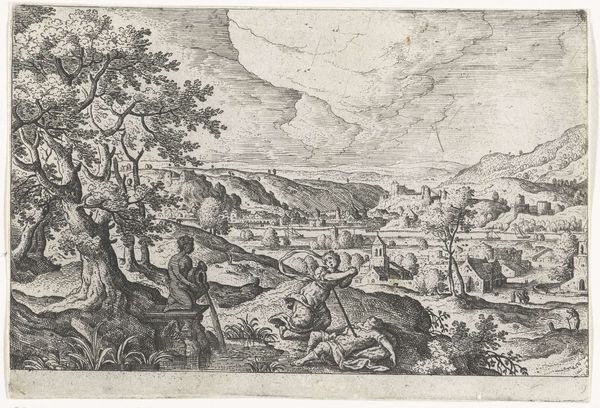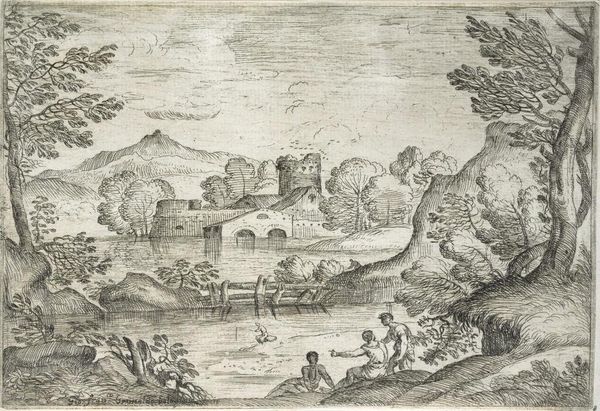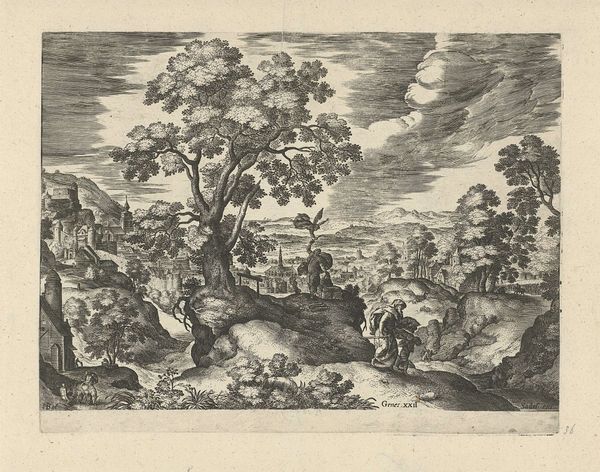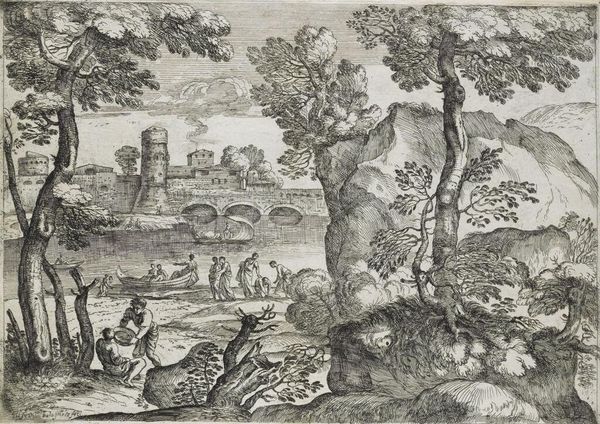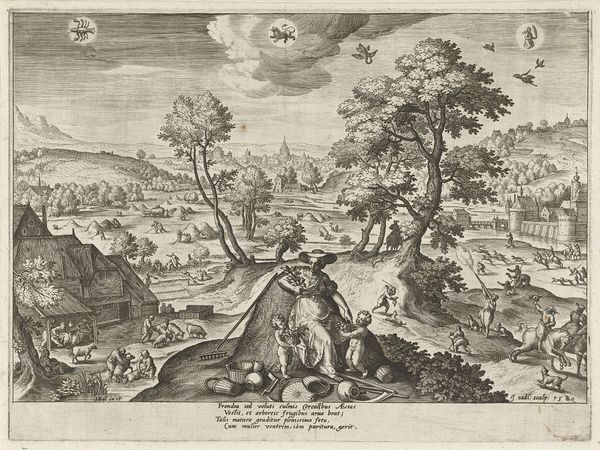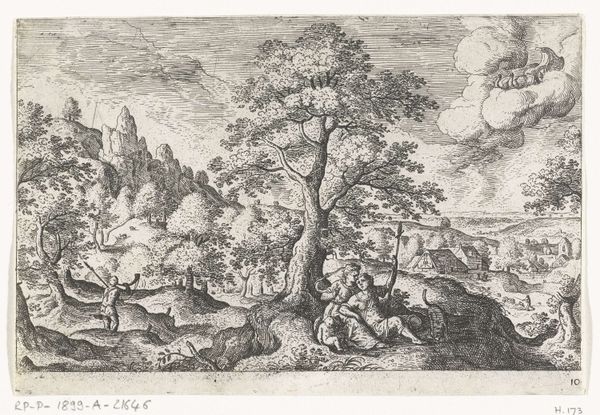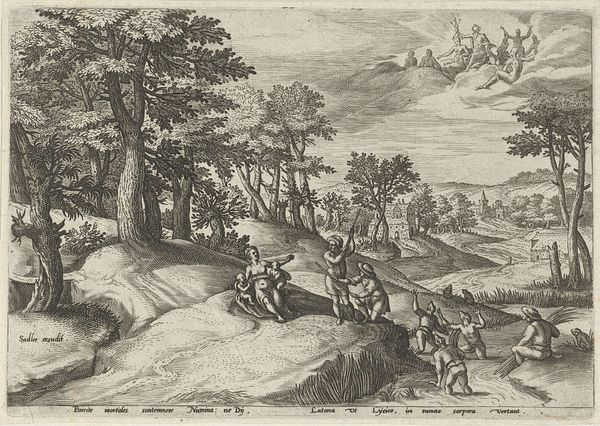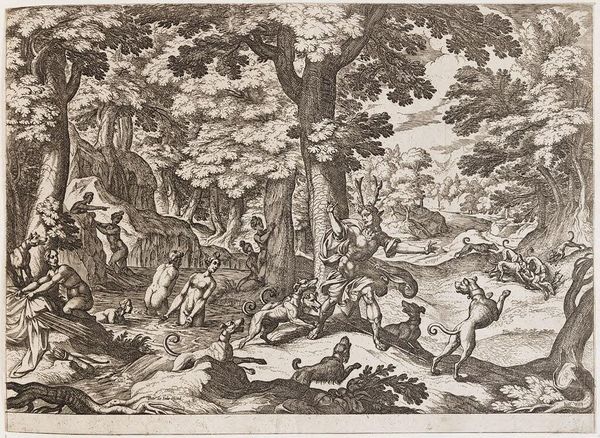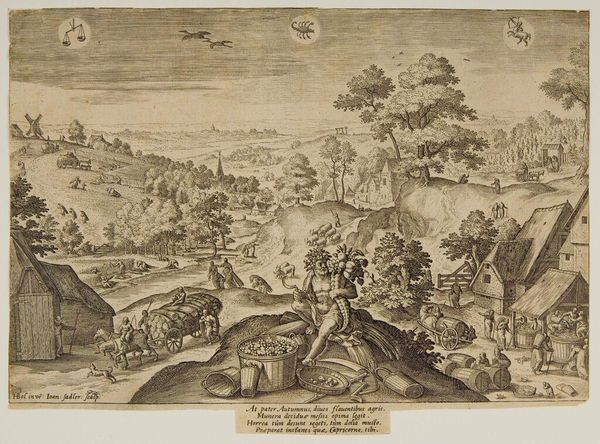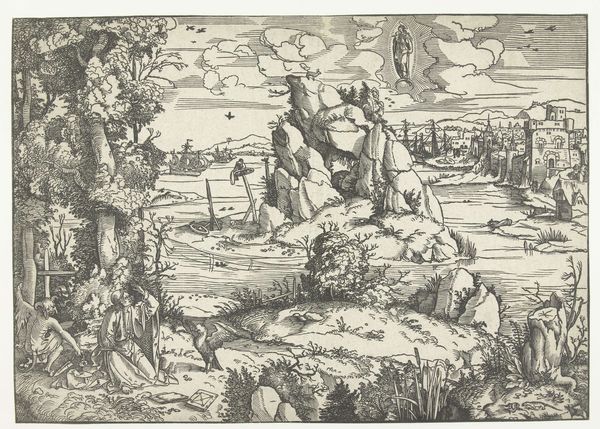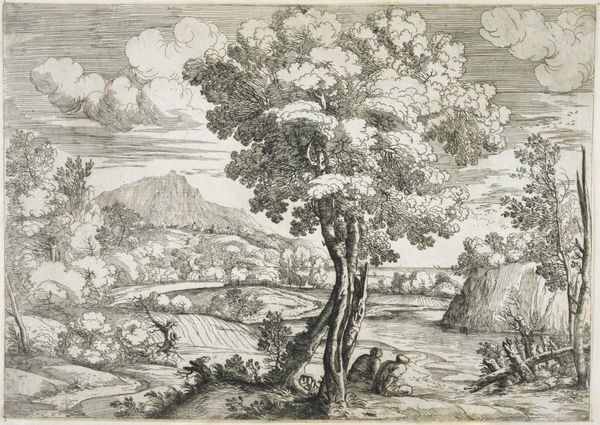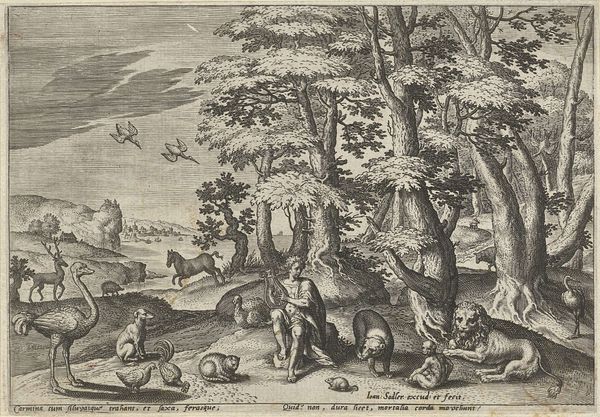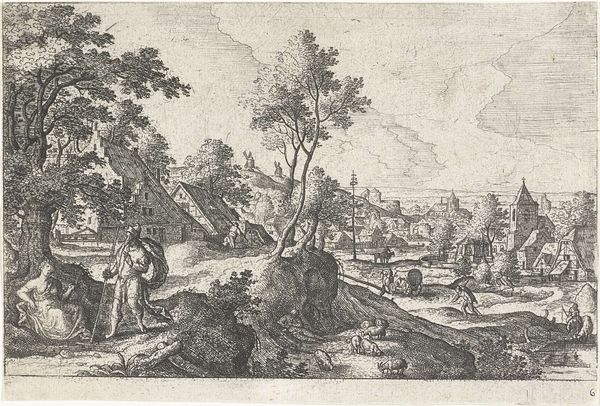
print, etching
# print
#
etching
#
landscape
#
river
#
etching
#
genre-painting
#
northern-renaissance
Dimensions: height 67 mm, width 216 mm
Copyright: Rijks Museum: Open Domain
Curator: The artwork before us is titled "Konijnenjacht," which translates to "Rabbit Hunt," an etching created in 1631 by an anonymous artist and held here at the Rijksmuseum. Editor: The title does a fair job describing what’s happening. It feels like chaos in miniature. All these frantic gestures and movements, rendered in such fine detail. What’s the overall effect of those tiny, repeating lines to you? Curator: Etchings like these were more than just art. They were affordable narratives circulated among a growing middle class, demonstrating societal practices such as the hunt. The landscape grounds the activity as an assertion of power. Control of nature mirrored their aspirations for societal influence. Editor: Power indeed. Notice the detail given to the weapons and hunting techniques? There’s also something inherently primal in this depiction. Hunting rituals often possess deep symbolic meanings within communities. What purpose might they have held? Curator: Likely both practical and symbolic. Meat sustained populations. Skillful hunting might signify status and provide social mobility. Prints themselves facilitated distribution, enabling cultural trends to spread widely. Hunting scenes were particularly sought after by a rising bourgeois interested in courtly pastimes. Editor: It makes one think of that long cultural thread connecting humans to the natural world and of how we assert control over it. Look at how prominently these hunters and dogs stand out, with so many little lives caught mid-flight! One can't ignore that it presents both our role in the ecosystem and perhaps an ambition to dominate it. Curator: Exactly, such pieces reveal much about their contemporary societal structure as visual declarations of human impact. Hunting as a sport developed within specific social stratifications; these depictions provide insight into what individuals treasured, feared, or perhaps desired to emulate. Editor: It's a glimpse into a whole belief system. Considering that perspective makes the scene come alive with complex undertones, almost unsettling. Curator: Indeed, it compels contemplation about human relationships to nature in that era and the echoes into the present. Editor: Precisely! Thanks to pieces such as these, the chase for understanding human culture moves on.
Comments
No comments
Be the first to comment and join the conversation on the ultimate creative platform.
